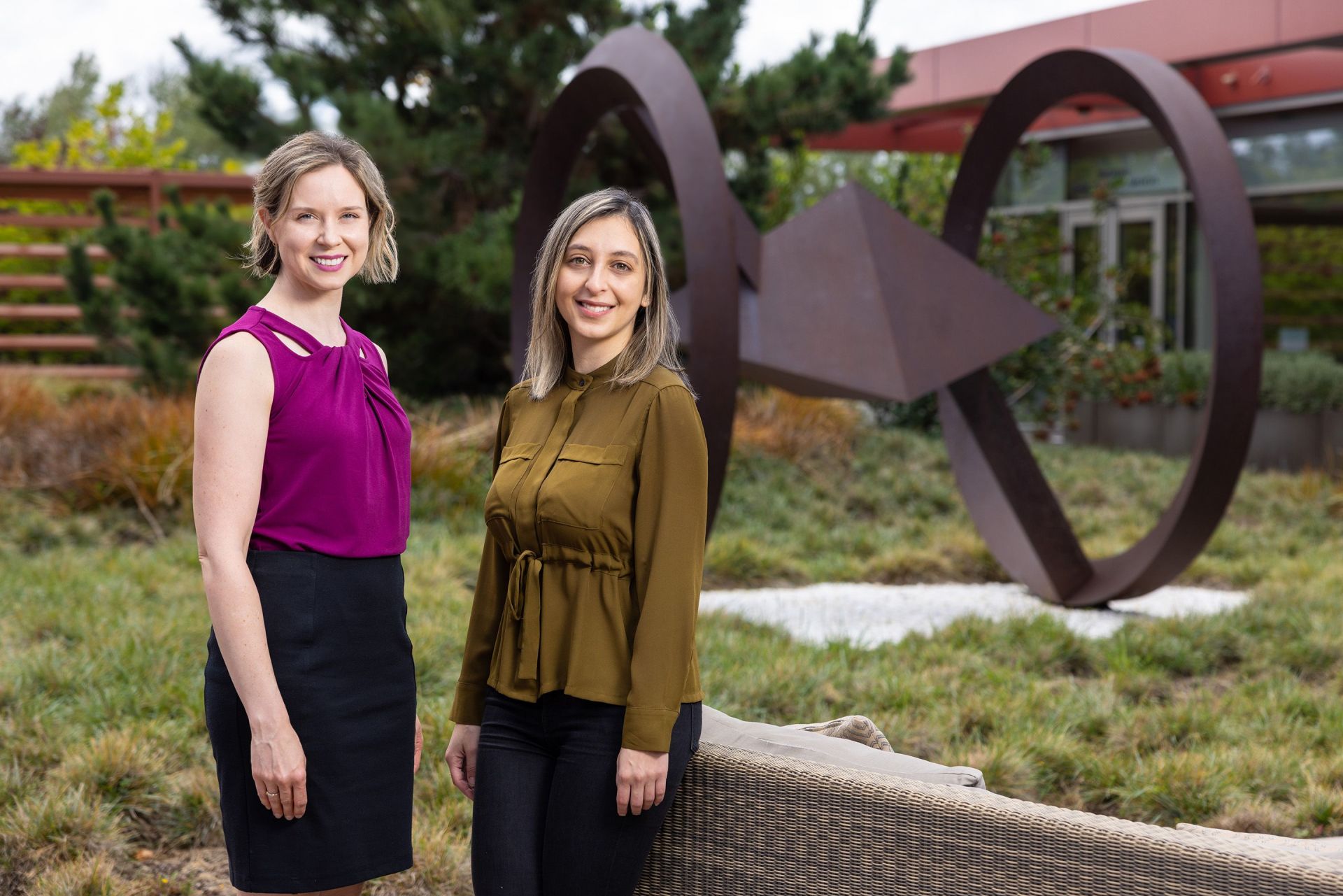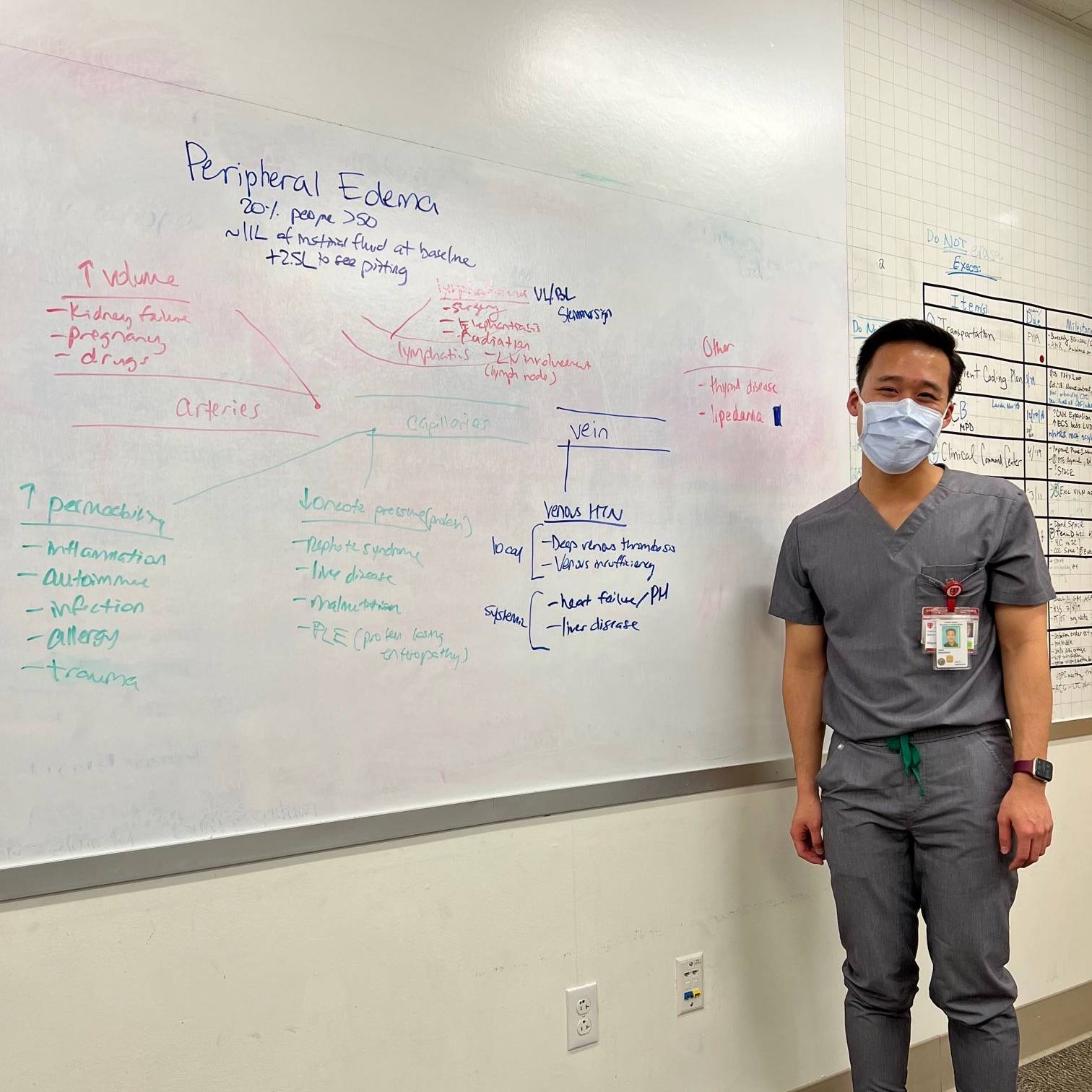Having a Blast Teaching Residents How to Teach
Medical Education Elective Teaches Teaching Skills for Future Attending Physicians
Sharmin Shekarchian, MD (left) and Julia Armendariz, MD

Sharmin Shekarchian, MD (left) and Julia Armendariz, MD
Having a Blast Teaching Residents How to Teach
Medical Education Elective Teaches Teaching Skills for Future Attending Physicians
Much of medical training is based on one person passing on knowledge to the next person in line. A fellow teaches a third-year resident, who teaches an intern, and so on down to students in medical school.
But for all the education that takes place at an academic medical center like Stanford, there is surprisingly little formal training in how to be an effective educator.
That’s the scenario Poonam Hosamani, MD, clinical associate professor of medicine, set out to change. Hosamani is one of six associate program directors in the Stanford Medicine residency program and also a full-time hospitalist, caring for patients and leading bedside rounds with residents.
Creating Medical Educators
The underpinning of medical residency training is a series of brief, intensive experiences in mostly hands-on patient care. Each rotation lasts two to four weeks. Stanford Medicine offers 65 rotations in emergency medicine, intensive care, cardiology, global health, and many other specialized areas. There is a core of required rotations, but residents choose to enroll in additional rotations, called electives, based on their interests.
Most Stanford Medicine residents want to stay in academic medicine, so their ability to be effective teachers is important to their future roles as attending physicians. Hosamani wanted to address that issue through a pilot program called the Medical Education Elective. The key question was: How can residents build skills to be more effective educators?
The opportunity to focus on effective education arose in 2021 when an international rotation was canceled because of COVID-19. Residents who had been scheduled to go abroad asked Hosamani to create an alternative rotation for them. “I immediately saw the opportunity to solidify teaching skills earlier in the rigorous training all physicians go through, from medical school to fellowship training,” she recalls.

Poonam Hosamani, MD
The pilot was launched in spring 2021 with five residents. “We organized lectures and workshops for them with faculty from the Palo Alto Veterans Affairs Medical Center and Stanford School of Medicine,” Hosamani explains. To date, the Medical Education elective has been offered five times for 25 residents.
Sharmin and I have an absolute blast doing this. We love it with all our hearts, and we’ve both grown a lot through this experience… This elective enables learners to take the time to think about how they can be better educators, and to enrich their career path with joy.
– Julia Armendariz, MD
Sharmin and I have an absolute blast doing this. We love it with all our hearts, and we’ve both grown a lot through this experience… This elective enables learners to take the time to think about how they can be better educators, and to enrich their career path with joy.
– Julia Armendariz, MD

Julia Armendariz, MD, and Sharmin Shekarchian, MD
Two Course Directors Added
Having established the program and seen it through its pilot phase, Hosamani passed its implementation on to two junior faculty members who are as passionate about educating educators as she is: Julia Armendariz, MD, affiliated clinical assistant professor of hospital medicine, and Sharmin Shekarchian, MD, affiliated clinical assistant professor of hospital medicine.
“Sharmin and I have an absolute blast doing this. We love it with all our hearts, and we’ve both grown a lot through this experience,” comments Armendariz. “Medicine is hard, and being a physician is not easy. A person could get lost doing all the things it takes to learn how to be a good doctor. This elective enables learners to take the time to think about how they can be better educators, and to enrich their career path with joy.”
Shekarchian adds, “For me, the highlight of the rotation is the four hours observing and listening to all the residents present their talks. We celebrate their achievements, and we always learn from the residents through their presentations.”
Tools of the Trade
The rotation includes daily lectures on topics such as how to present a chalk talk (using a whiteboard and markers), how to set expectations with learners, principles of adult learning, how to give feedback, how to design teaching objectives, and many others.
“One of the best parts of the rotation is observing the residents presenting their own work,” Hosamani says. “I remember vividly one resident who used a football as part of his chalk talk to demonstrate teaching how to place the probes for a bedside cardiac ultrasound. He held the football over his heart as he walked through the process, moving the probes into their appropriate places on the football.”
Much of the learning occurs in small-group interactions among the residents as they apply learning concepts to the clinical setting.


Muhammad Fazal, MD, was a third-year resident when he enrolled in the Medical Education elective; he is now a fellow in cardiology at Stanford. “The whole process was very rewarding,” he recalls. “It made me realize how hard it is to give an effective chalk talk that is short enough to maintain interest yet long enough to present the information.” He regrets not having taken the elective sooner in his training and hopes to see it as a requirement at some point.
Fazal also appreciated the emphasis on the “softer science” of medicine: how to communicate and listen. “These are skills you don’t learn in a textbook,” he notes. “It made me realize that often just being there to listen and be supportive is what the patient needs.”
The Sky’s the Limit
“It’s a great honor to have Dr. Hosamani endow us with the opportunity to further develop this program,” Armendariz states. “She is a great mentor and will continue to advise us on how to get things done.”
Looking ahead, Armendariz, Hosamani, and Shekarchian all envision adding topics to the curriculum, adapting the elective for other medical subspecialties, inviting more faculty members to participate, incorporating technology into some of the teaching modalities, and presenting their work at medical conferences to enable others to create their own programs.
“The sky’s the limit,” Hosamani declares. “Our only constraint is the availability of resources to expand and further enrich this elective.”
